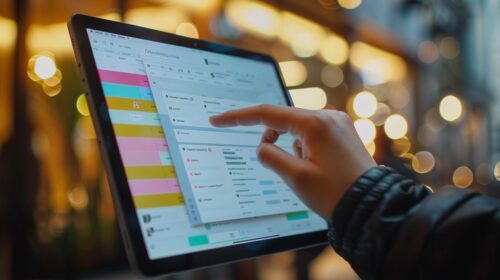
Website Development Stages
The process of website development typically involves several stages to ensure that the final product is effective, user-friendly, and aligned with business goals. Here are the primary stages we go through with our clients:
1. Planning & Discovery
- Objective Setting: Identify the purpose of the website, target audience, and specific business goals.
- Scope Definition: Determine the project’s scope, including the features, functionalities, and pages needed.
- Research & Analysis: Analyze competitors, industry trends, and audience behavior to create a strategic approach.
- Timeline & Budget Planning: Set timelines, milestones, and budget estimates for the project.
2. Wireframing & Prototyping
- Sitemap Creation: Outline the structure and flow of the website’s pages.
- Wireframes: Design wireframes to lay out the elements and positioning on each page, focusing on user experience.
- Prototyping: Build a clickable prototype that allows stakeholders to visualize the navigation and functionality.
3. Actual Design
- Branding Alignment: Use brand colors, fonts, and style guidelines to ensure consistency.
- UI Design: Develop visually engaging and intuitive interface designs.
- Feedback Loop: Share designs with stakeholders and refine based on feedback to finalize the design.
4. Content Creation
- Content Strategy: Plan the content, including the types of text, images, and multimedia needed for each page.
- Copywriting: Write SEO-optimized, user-focused copy to engage visitors.
- Image & Media Selection: Source or create relevant images, graphics, and videos that enhance user experience.
5. Actual Development
- Front-End Development: Convert design into code, building the structure and user interface with HTML, CSS, and JavaScript.
- Back-End Development: Set up the server, databases, and APIs needed to support the website’s functionality.
- CMS Integration: Implement a content management system (e.g., WordPress, Shopify) if the site requires easy content updates.
6. Testing
- Functionality Testing: Ensure all features, forms, and links work correctly.
- Compatibility Testing: Check that the site displays properly across browsers and devices (desktop, tablet, mobile).
- Performance Testing: Assess loading speeds, image optimization, and other performance metrics.
- User Testing: Gather feedback from users to identify potential usability issues.
7. Launch
- Final Review: Conduct a thorough check to make sure everything is functioning as intended.
- Deployment: Move the website from the development environment to the live server.
- Announcement & Marketing: Share the launch with the audience via email, social media, or other channels.
8. Maintenance & Optimization
- Ongoing Support: Address any issues, bugs, or updates that arise post-launch.
- Performance Monitoring: Use analytics tools to track user behavior, page performance, and engagement.
- Updates & Improvements: Regularly update content, improve SEO, and make design tweaks to keep the site fresh and effective.
With the stages above, we help our clients create a website that meets business goals, provides a great user experience, and is scalable for future growth.
Your website is the window of your business. Keep it fresh, keep it exciting.
Mobile App Development
Mobile app development follows a structured process to ensure the final product is user-friendly, functional, and aligned with business objectives. Here are the primary stages that we go through with our clients:
1. Planning & Discovery
- Goal Definition: Determine the app’s purpose, target audience, and specific objectives.
- Scope & Feature Set: Define the core features, functionalities, and structure of the app.
- Market Research: Analyze competitors, user needs, and industry trends to align the app with market demands.
- Technical Requirements: Choose the development platform (iOS, Android, or cross-platform) and define the tech stack.
- Timeline & Budgeting: Set milestones, timelines, and budget requirements.
2. Wireframing & Prototyping
- User Flow Mapping: Outline the app’s navigation, user interactions, and content flow to enhance usability.
- Wireframe Creation: Develop basic screen layouts to organize elements without focusing on design.
- Clickable Prototype: Create an interactive prototype to visualize navigation and receive early feedback from stakeholders.

3. UI/UX Design
- User Experience (UX) Design: Prioritize ease of use by creating intuitive and accessible interfaces.
- User Interface (UI) Design: Design visually engaging screens, adhering to brand guidelines and platform-specific standards (e.g., Apple’s Human Interface Guidelines or Google’s Material Design).
- Design Feedback: Iterate designs based on feedback to finalize a user-friendly and visually appealing interface.
4. Development
- Technical Architecture: Set up the project structure, development framework, and database requirements.
- Front-End Development: Code the app’s user interface and implement user interactions for iOS and/or Android.
- Back-End Development: Build the server, database, and APIs that support the app’s functionality (for data storage, authentication, etc.).
- Integration of APIs & Services: Connect to third-party services or APIs (such as payment gateways, location services, or social media).
- Agile Development: Use sprints or iterations to develop features incrementally, ensuring regular testing and feedback.
5. Testing
- Functionality Testing: Ensure all features work correctly across different devices and operating systems.
- Usability Testing: Evaluate the app’s usability and user-friendliness by conducting user tests and gathering feedback.
- Compatibility Testing: Verify the app’s performance on different devices, screen sizes, and OS versions.
- Performance Testing: Assess load times, speed, and responsiveness, and optimize the app for efficiency.
- Security Testing: Implement measures to protect user data and prevent vulnerabilities like data breaches and unauthorized access.
- Beta Testing: Release the app to a small group of users to gain real-world feedback and identify final issues.
6. Launch
- Preparation for App Stores: Format app screenshots, write descriptions, and prepare other assets for submission.
- App Store Submission: Submit the app to Google Play Store, Apple App Store, or other platforms, and follow their review processes.
- Launch Marketing: Promote the app’s launch through email, social media, or press releases to generate initial user engagement.
- Post-Launch Monitoring: Track metrics like downloads, user reviews, and crash reports to assess early performance.
7. Maintenance & Updates
- User Feedback & Updates: Gather feedback, address bugs, and release updates for improved functionality and user satisfaction.
- Performance Monitoring: Use analytics tools to monitor user engagement, retention, and usage patterns.
- Feature Enhancements: Based on user needs and market trends, introduce new features or enhancements to keep the app competitive.
- OS Compatibility Updates: Regularly update the app to remain compatible with new operating system versions and devices.
These stages helps ensure a successful app launch and continued growth through maintenance, optimization, and feature improvements of all our applications.

